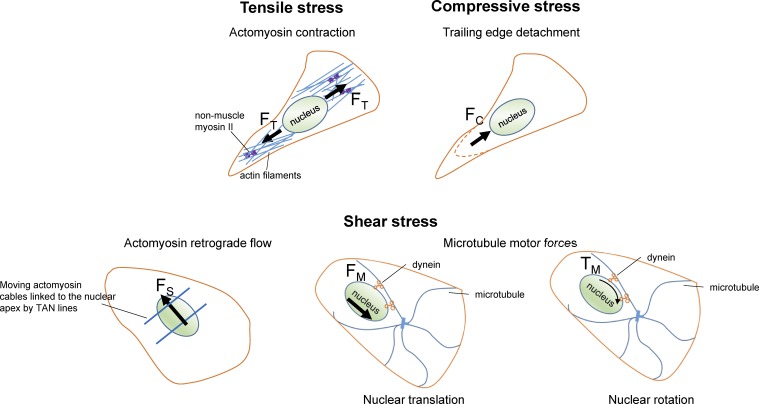Figure 3.
Examples of mechanical stresses that can position the nucleus. These include tensile stress (corresponding to a net force FT), compressive stress (FC), or shear stress (FS). Depending on the cell context, different stresses can be dominant. For example, tensile actomyosin forces may position the nucleus during 2D cell crawling, and actomyosin retrograde flow can position the nucleus away from the leading edge during the initial phase of wound healing. Compressive stresses generated, for example, by trailing edge detachment can translate the nucleus toward the leading edge. Microtubule motors can translate the nucleus by shearing it (FS) or rotate it by exerting a torque on it (TM). Kinesin motor action is not shown in the figure for clarity. Dissipative nuclear stresses generated due to moving boundaries may also contribute to nuclear positioning (not shown). A balance between a subset of or all of these forces determines nuclear position. TAN lines, transmembrane actin-associated nuclear lines.

